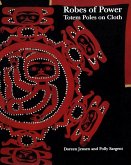One of the most fascinating, and least understood, men in the history of Spanish America and the American Southwest and Southeast was the Moroccan "slave" known as Estevan de Dorantes in sixteenth century Spanish accounts of New Spain. Estevan was one of the four survivors of the Panfilo Narváez Expedition, which sailed from Spain in 1527 with the objective of conquering Florida and the Gulf of Mexico. The survivors were stranded on the coast of the Gulf of Mexico and soon captured by Native Americans. After eight years of slavery, the expedition members escaped and traveled west, across western Texas, through the southwestern borderlands, and arrived in Culiacán, Mexico, in the spring of 1536. Three years later, Estevan led the first Spanish expedition to Zuni lands and was the first Moroccan and African and non-Native American to set foot in present-day Arizona and New Mexico. To learn more about the exploration of New Spain and Estevanico's journey into present day American Southwest, readers can turn to Arthur S. Aiton's Antonio de Mendoza: First Viceroy of New Spain. Durham: Duke University Press, 1927; Cleve Hallenbeck's The Journey of Fray Marcos de Niza. Dallas, TX: Southern Methodist University Press, 1949; John Terrell's Estevan the Black. Los Angeles, CA: Westernlore Press, 1968; Carl O. Sauer's Sixteenth Century North America. Berkeley: University of California Press, 1971; and The Documents of the Coronado Expedition, 1539-1542. Edited and annotated by Richard Flint and Shirley Cushing Flint. Dallas: Southern Methodist University Press, 2005. As one would expect, Spanish colonial encounters with indigenous populations of the American Southwest have generated a vast body of literature. Cleve Hallenbeck and Juanita Williams' Legends of the Spanish Southwest. Glendale, CA: The Arthur H. Clark Company, 1938; Elsie Parsons' Pueblo Indian Religion 2 vols. Lincoln: University of Nebraska Press, 1939; George Hammond's Coronado's Seven Cities. Denver, CO: The W.H. Stationary Company, 1940; Early Images of the Americas: Transfer and Invention. Edited by Jerry M. Williams and Robert E. Lewis. Tucson: University of Arizona Press, 1993; The Coronado Expedition to Tierra Nueva: The 1540-1542 Route across the Southwest. Edited by Richard Flint and Shirley Flint. Niwot: University of Colorado Press, 1997; and William Hartmann's Searching for Golden Empires: Epic Cultural Collisions in Sixteenth-Century America. Tucson: University of Arizona Press, 2014, provide information on the journey and the demise of Estevanico among the Zuni people of the American Southwest. That said, the selected bibliography and media works below are not comprehensive, but they are a good starting point for sources and information on the epic journeys of Estevanico De Dorantes from Azemmour, Morocco, to what is today the American Southwest and Southeast as well as northern Mexico. This book compiles work about the life and experiences of Estevanico and provides a comprehenssive list of references for those who are interested in the fascinating life of this Moroccan explorer
Hinweis: Dieser Artikel kann nur an eine deutsche Lieferadresse ausgeliefert werden.
Hinweis: Dieser Artikel kann nur an eine deutsche Lieferadresse ausgeliefert werden.








